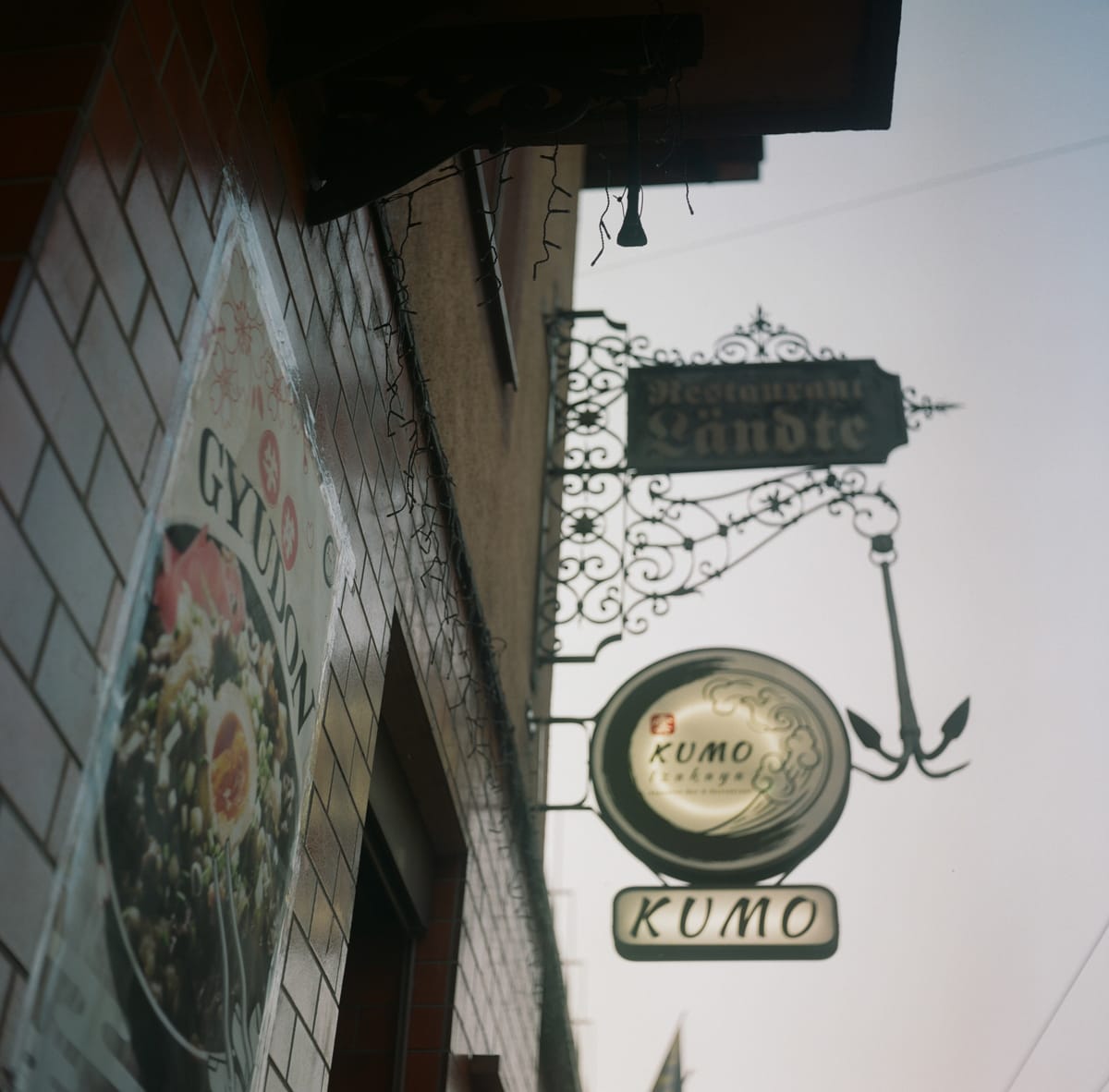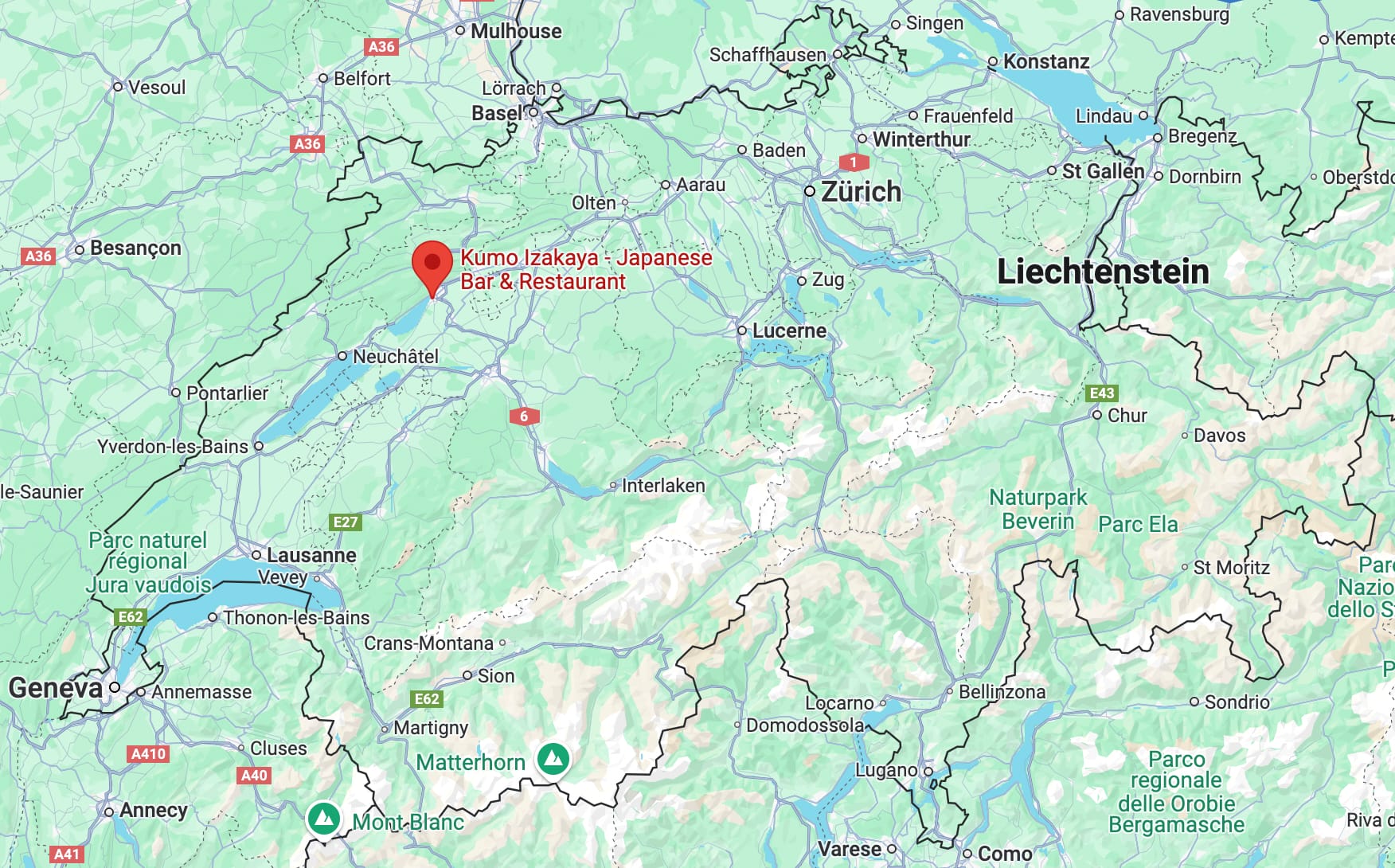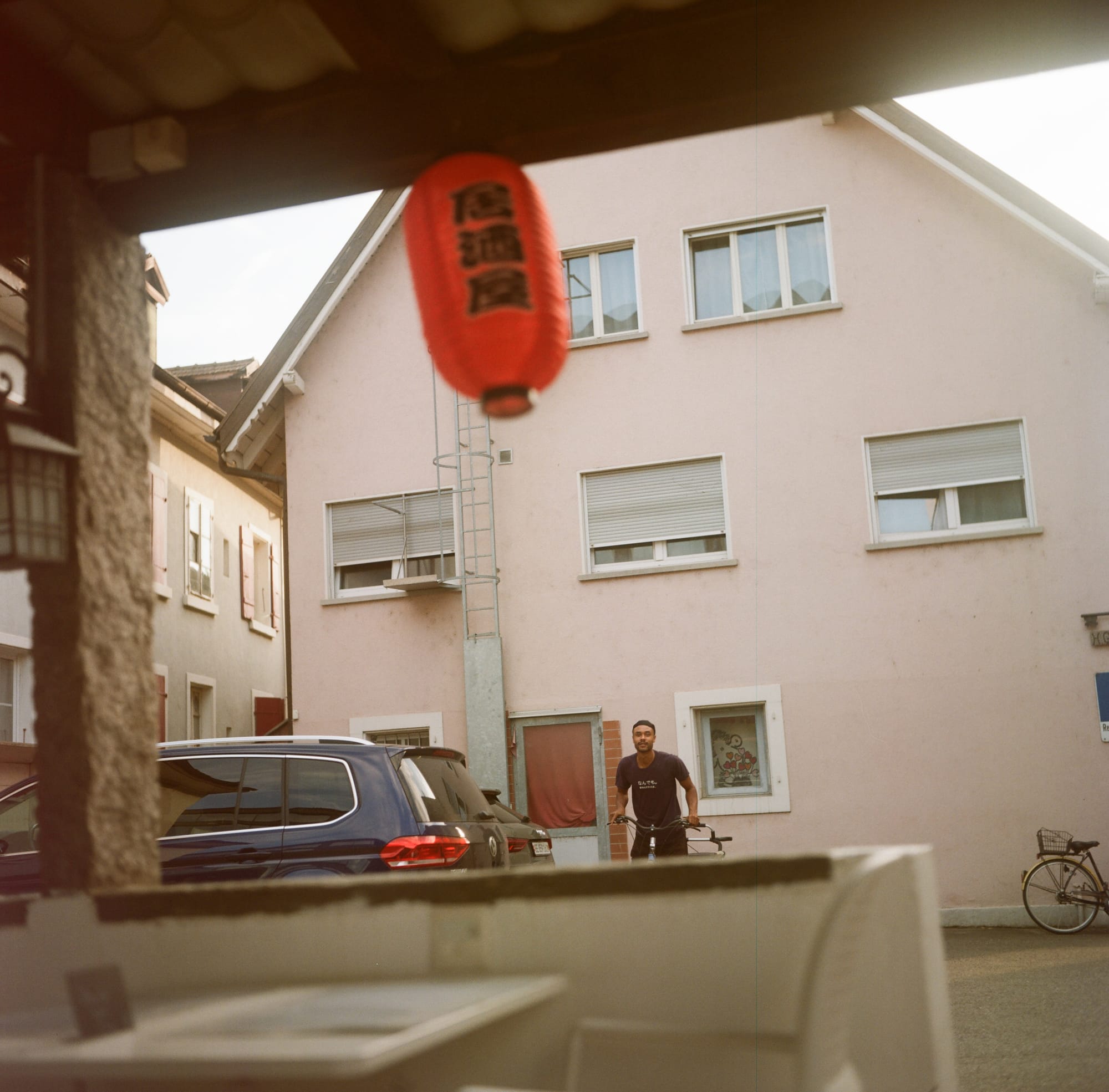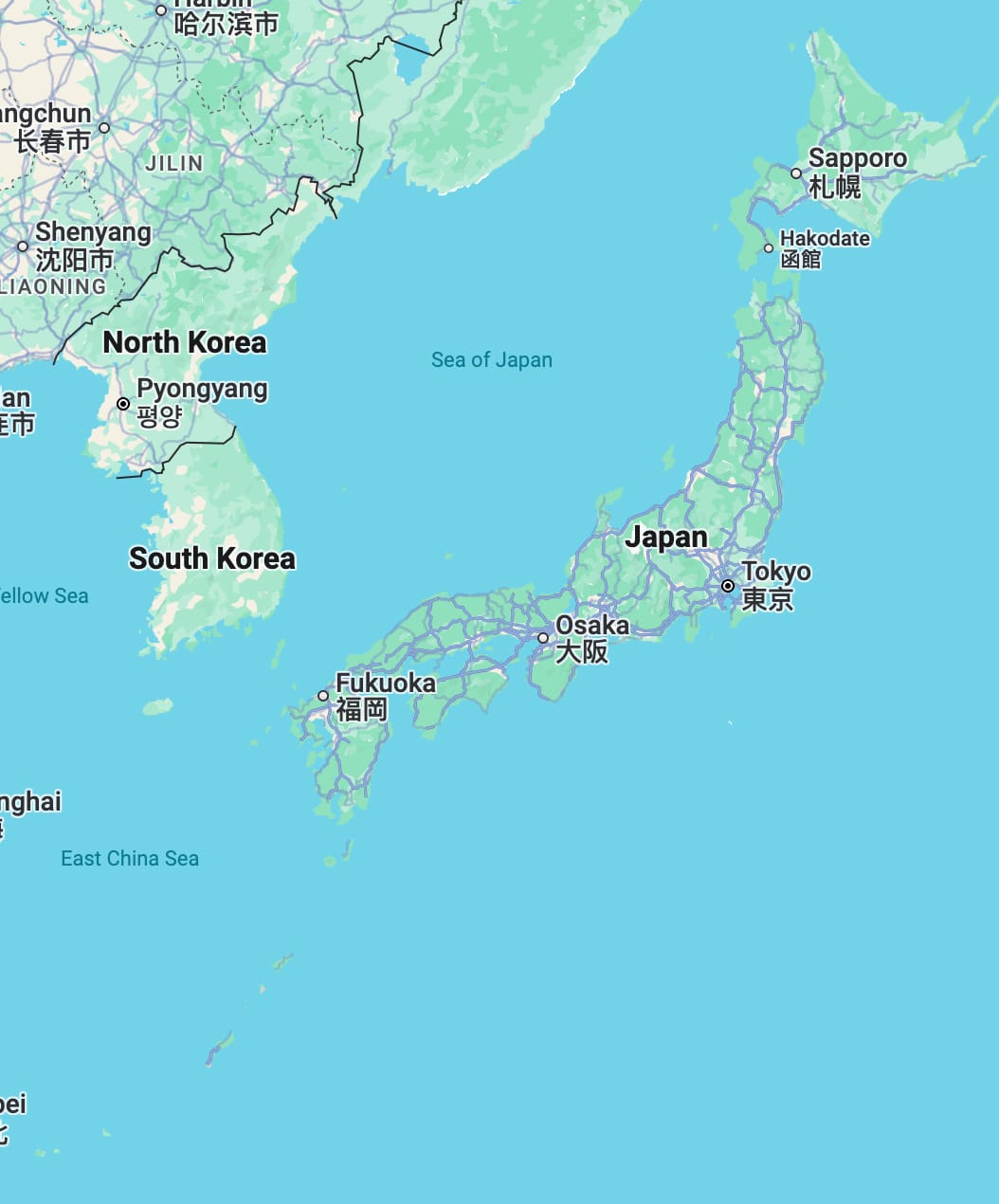Where to eat JAPAN 🇯🇵 Biel/Bienne: Kumo Izakaya
As far as dining experiences in Switzerland go, when rounding out cost, authenticity, food quality and service, Kumo Izakaya hits all the right notes... We traveled half an hour to Biel/Bienne because the reviews on Kumo Izakaya far exceeded anything available in Bern.

Kumo Izakaya
Aarbergstrasse 21/Rue d'Aarberg 21, Biel/Bienne

Published November 5, 2024 · by Amanda Rivkin Häsler
What we ordered: For two people, chicken gyoza tori and shrimp tempura to start and for main dishes, tonkatsu (chashu) ramen and yakiniku beef. To drink, we had three Sapporo beers (but were only charged for two), warm Sho Chiku Bai “Taru Zake” and cold sparkling sake was compliments of the house with the bill. Our first drinks were also served with a small assortment of Japanese rice cracker snacks.
Cost: 127.50 CHF / €135 / $147
Kumo Izakaya is a great little spot with an outdoor garden adjacent to a parking lot and overlooking the street about a five minute-walk from the main train station in Biel/Bienne. The authenticity of the spot cannot be doubted and even those in Biel/Bienne who have not made it yet are aware of this wonderful gem of a Japanese izakaya and have placed it high on their lists.
As far as dining experiences in Switzerland go, when rounding out cost, authenticity, food quality and service, Kumo Izakaya hits all the right notes. While totally casual as a restaurant, many of the customers the warm summer night we were there nonetheless came a little bit elevated in their appearance as going to Kumo Izakaya is an occasion, or at least should be taken as one.

While the parking lot and street can lend a social romantic flair and seem a bit gritty for Switzerland if you opt for outside over the interior which has more traditional Japanese décor, from rice paper screens and silky pillows, the food quality and service remained elevated.
It is not too much to say that the food is as good as in Japan itself and there is no chintz or catering to local flavors at Kumo Izakaya. Perhaps because Japanese food has become something truly global between sushi and ramen, but that does not mean there are not many places throughout Switzerland and indeed the world serving mediocre if not outright garbage Japanese food.

We traveled half an hour to Biel/Bienne because the reviews on Kumo Izakaya far exceeded anything available in Bern. We were not disappointed by our decision. The appetizers were both fried but light as can be — there was no heaviness in either the gyoza or the tempura. They could rival air for how lightweight and perfectly crisp they were. The gyoza dumplings too lacked the density that lesser quality places will often have. On an especially hot and humid day, you could really feel the difference between heavy fat and a carefully made fried appetizer.
Finally, for the mains, the tonkatsu (chashu) ramen was finally a bowl of ramen in Europe to write home about. All the umami of the broth itself was perfectly complimented by the traditional ramen topics, the crispy chashu balanced by the soft-boiled egg. The only element that was surprising but nonetheless perfectly tasty was just a bit of sweet corn to add some crunch. The additional condiment of shichimi togarashi or red pepper mix as an additional add-on spoke to my spicy side, or at least my desire to always turn the heat up when and where possible. I would travel twice as long for ramen this good again anytime.
The beef yakiniku was served with rice. Since it was not the usual Asian way of preparing meat in Switzerland, which is to say with a lot of sauce, it was an interesting mixture of sauce and dry meat. You could still taste the meat and the meat was not disappearing into a large amount of sauce. There was still a dryness to the beef, in other words, rather than an Asian take on stroganoff.

We can strongly recommend Kumo Izakaya for a date night or out of the way of meetings. It’s a cute and cozy spot with wonderful, carefully crafted food that could just as easily be found on a back street in Tokyo. Unlike much Japanese food in Europe which could fit the globalized continental taste regime, this was perfectly tasty but also authentically true to the nation it was representing.

How to get to Japan from Switzerland:
It appears there are no longer non-stop flights to Tokyo from Zürich. When we visited in June, we may have been on one of the last direct flights between Switzerland and the land of the rising sun.
On our return journey, Georg was able to fly in the cockpit for a story he was working on which has since been published in his newspaper, Neue Zürcher Zeitung. He was told that soon it may no longer make economic sense to continue the route given that flying over Russia is no longer possible, Iran is out as well and forget about North Korea. The result was a circuitous route over Turkey, the Caucasus, the Caspian, Turkmenistan, China, South Korea and finally Japan.
Routes are still possible through Germany in partnership with Swiss Air’s owners Lufthansa. Additional routes are available through Air France with a stopover in Paris, British Airways and Japan Airlines via London Heathrow, Turkish Airlines via Istanbul, Emirates through Dubai connecting with Japan Airlines as well as Korean Air through Incheon, South Korea. Those are pretty much your only options to clock in at a total travel time under 20 hours. The lack of a direct flight from Zürich adds considerable time and stress to the journey, for certain.
From Geneva, Air France offers routes through Paris and Ita Airways via Rome’s Leonardo da Vinci-Fiumicino are likely the best options. There is also a Swiss Air codeshare with Lufthansa via Frankfurt and an Air Dolomiti connection to Lufthansa through Munich. Turkish Airlines flies via Istanbul and Emirates offers a connection in Dubai. Additionally, British Airways offers a connection with Japan Airlines via London’s Heathrow Airport.
How many people from Japan are in Switzerland: Almost 6,000
Distance between Bern and Tokyo: 9,659 km
Distance from Kumo Izakaya and Tokyo: 9,652 km
Learn how to make Japan's national dish, tonkotsu ramen, and about its origins.
Follow our social media pages @swissglobaldining on Instagram, TikTok and YouTube